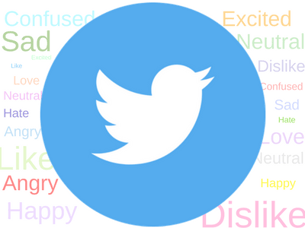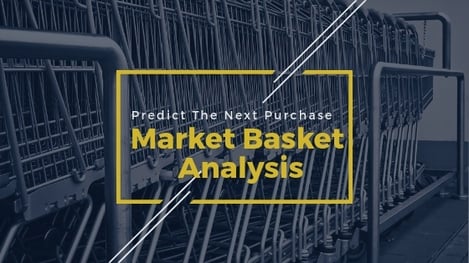
Big data has revolutionized business all around the world. Food and beverages industry, in particular, can largely benefit from big data. Be it, manufacturers, retailers or restaurants chains all of them can leverage big data analytics for their business. The applications of big data in food industry are so extensive that from production to customer service everything can be optimized. If you are even a little skeptic about the potential of big data then the power of IBM computing is just the story you should know about.

IBM researchers have created a food program that creates original recipes based on mentioned food items. The program uses big data analytics to study different aspects of food like the taste, combinations, chemical properties etc. to suggest new and innovative recipes. This just the beginning of the big data era and many possible solutions can already be witnessed. Here are 7 uses of big data in food industry that you can leverage for your business right now.
Read More: 3 Reasons: Why Most Big Data Project Fail
7 Uses of Big Data in the Food and Beverages Industry:
1. On-time Delivery:
Food delivery can be highly optimized and timed using various big data analysis tools and techniques. While this comes more under the role of big data in logistics, there are many food retailers who specialize in food delivery and not to forget the number of restaurants that provide home delivery options. Big data can collect data from various sources like road traffic, weather, temperature, route etc and provide a proper estimate for the time taken to deliver goods. Moreover, big data analysis can also predict the impact of all the above factors on food quality. Thus data analysis helps ensure that you don’t waste your resources in transporting stale products and deliver perishable food items in good quality.
2. Operational Efficiency:
From analyzing the impact of market trends on stock consumption to the effect temperature has on food quality, big data can help food manufacturers and retailers ensure they always deliver the best quality possible. But these are not the only ways big data can improve operational efficiency.
For instance, a Cincinnati-based supermarket chain Kroger analyzed it customers’ behavior using infrared sensors at the door and cash register. By applying predictive analytics on historic shopping data the company was able to cut the average checkout wait time from 4 minutes to less than 30 seconds. It can also analyze market trends to suggest optimum inventory levels at different locations.
3. Sentiment Analysis:

Sentiment analysis is the monitoring of customer emotions over social media networks. Using techniques like natural language processing, data analysis tools go through the text and categorize it into positive, negative or neutral. This technique of big data analysis can be used by food companies to analyze their customer emotions on a scale. Any negative review can be analyzed at scale and preventive actions can be taken to prevent the spread of negative word. This technique is especially beneficial for large-scale food retailers like McDonald's, KFC, PizzaHut etc.
Read More: A Complete Guide to Using Sentiment Analysis in Business
4. Better Quality:
The consumer always expects the same taste in food at the places they love. Though it sounds easy to maintain the same taste, it is a very challenging task. The taste of food not only depends upon the proper measurement of ingredients but also on their quality, storage and season. Big data analysis can analyze such changes and predict the impact of each on the food quality and taste. Data analysis can also analyze the impact of factors like storage and transportation on quality of packaged foods. The insights from such analysis can be used to understand pain points and suggest measures for improvement.
5. Personalization:
The ultimate aim of many big data projects is the same - provide a personalized, customer-centric experience to every buyer. This involves essential analysis of customer views like - what they like, how much they are willing to pay, what they share on social media, the reviews they make, the stories they resonate with etc. Today big data analytics has made tracking, collection and analysis all this data possible.
Starbucks, for example, uses the data from its 13 million mobile payment app users to track customer data like individual preferences, likes etc. All of which is used to create more relevant marketing messages, like an offer designed to entice a customer who hasn't visited in awhile.
6. Market Basket Analysis:

Market basket analysis is a technique which predicts the most obvious item that a customer is likely to purchase next. This analysis is based on the purchase history of the consumer and the items currently in his cart. Based on the insights from market basket analysis, food retailers and restaurants can create effective combo deals and improve their marketing messages.
For example, if upon analysis it is seen that customers prefer a muffin with their coffee then a combo can be created to help customers enjoy them together. This can also be used to suggest correct placement of items to entice customers to buy more. Sentiment analysis can also be done over a period of time to improve the efficiency of cross-selling marketing messages like offers and coupons.
Know more about Market Basket Analysis - Meaning, Application and Uses
7. Customer Service:
Customer service is one such part which is hardest to optimize. Nowadays there are multiple customer touchpoints like outlets, mobile app, website, social media, review sites, etc. All of these collectively impact the customer experience and his level of satisfaction. Big data in food industry can help analyze inputs from all these factors to give meaningful insights.
McDonald's, for example, has initiated a data-driven culture by leveraging trend-analytics to better understand the situation at each individual restaurant. The idea is to identify best ways to improve restaurant's overall service quality. For instance, the fast food chain is working to optimize the drive-thru experience based on three factors: design, information provided on the menu and the types of customers being served. Big data analytics helps put inputs from all 3 sources in one place for collective analysis.
Thanks to cloud computing that has made big data analytics approachable for the everyone. With many new initiatives coming every day in the big data space it is certain that this technology will soon revolutionize the working of many industries. Data science has a potential to solve any business problem provided the right kind of data is available. If you need help in transforming your business with the help of data backed decisions then feel free to contact us.

5 Practical Uses of Big Data in Marketing and Sales
Big data analysis is a powerful tool at the disposal of marketers. With the technology advancing rapidly, it has become a powerful tool for sales and...

1 min read
Bringing Analytics in Design: 7 Novel Ways of Using Big Data in Fashion
There is no doubt in the buzz big data has generated in the business. Big data analytics has revolutionized the decision making and changed...



